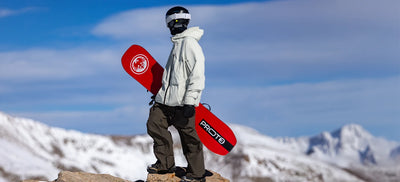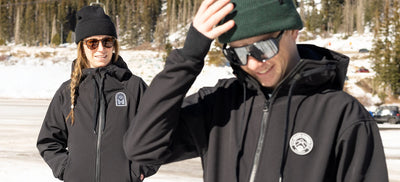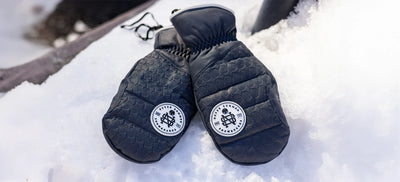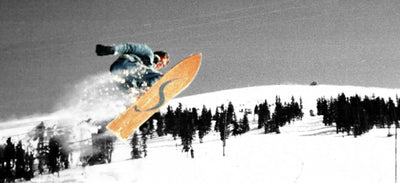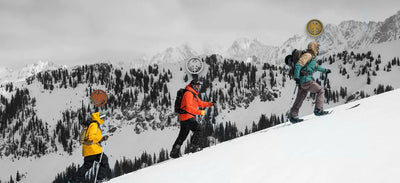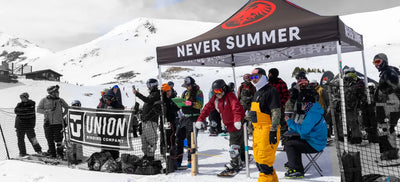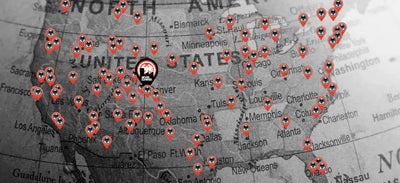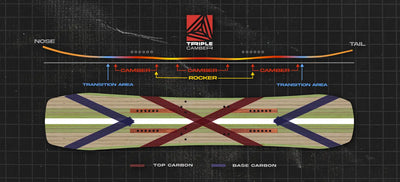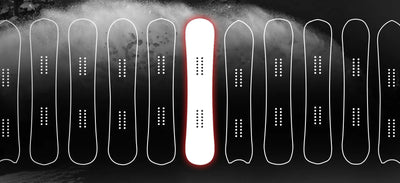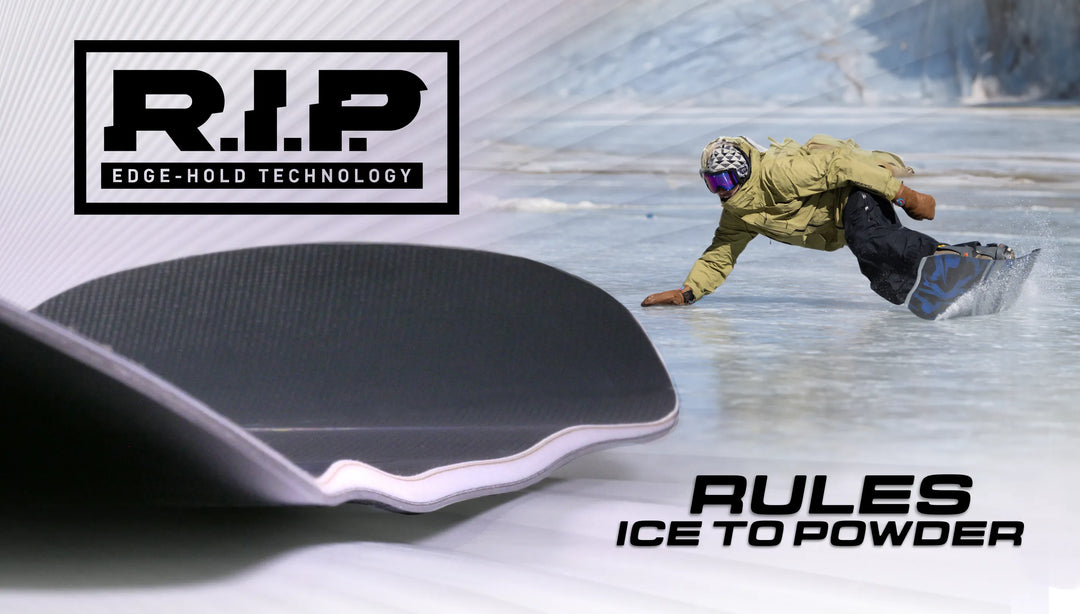All of us snowboarders wait out the final months of summer and fall in preparation of the snowboard season. Whether you've been a long time snowboarder or a beginner ready to hit the slopes, off-season training is essential to give you the best experience on the mountain. In this article, we'll dive a bit into effective snowboard workouts and the best exercise for snowboarding that can help you with your strength, balance, flexibility, and overall great snowboarding performance on snow.
Understanding the Demands of Snowboarding
Snowboarding requires a unique set of physical attributes. From carving down the slopes to mastering jumps and tricks, your body needs to be well-prepared for the challenges ahead. Balancing on the board engages your core and leg muscles, while navigating the terrain demands agility and coordination. Additionally, the cold environment places extra strain on your cardiovascular system. By understanding these demands, you can tailor your training to optimize your snowboarding capabilities.
Preparation: Setting the Foundation
Finding Your Motivation
Starting on a snowboarding workout journey begins with identifying your motivation. Whether you're driven by the thrill of learning new tricks or the joy of riding through fresh powder, keeping the motivation in mind for what you want to do this winter will help you stay committed to your training routine.
Assessing Your Fitness Level
Every snowboarder can start at a different level when getting into workouts. Evaluating your own fitness level to see where you excel and see where you need work will help create a well rounded plan to get your individual needs met for the upcoming season.
Setting Realistic Goals
Setting achievable goals is vital for tracking your progress and staying motivated. Whether you're aiming to improve your balance, increase your endurance, or master a specific trick, breaking down your goals into smaller milestones will make your journey more manageable and rewarding.
Building Strength for the Slopes
Snowboarding demands strong lower body muscles for stability and control, as well as an engaged core and upper body for side to side balance and steering.
Leg Workouts for Power and Endurance
You use your legs all day on the mountain and incorporating snowboarding training like squats, lunges, reverse lunges, jump squats, calf raises, and leg presses to strengthen your quadriceps, hamstrings, and glutes will be some of the most important things you trained up until the winter season. All of these exercises play a massive part in your balance on the hill as well as powering through various snowboard maneuvers you may learn or attempt this season.
Core Exercises for Stability
A strong core is your body's center of balance. Engage in planks, Russian twists, and mountain climbers to target your abdominal muscles, obliques, and lower back. A stable core will help you shift your weight accordingly, navigate twists, turns, and jumps with ease.
Upper Body Conditioning
While your legs and core are essential, your upper body contributes to overall control and balance. Integrate push-ups, pull-ups, and shoulder presses into your routine to strengthen your arms, shoulders, and back. This added strength will enhance your ability to steer and absorb shocks. It is also important to incorporate exercises that will increase the flexion in bending your elbows.
Enhancing Balance and Coordination
Snowboarding demands exceptional balance and coordination to navigate varying terrains and execute tricks gracefully. Getting a Bosu ball and practicing various balance exercises will help you immensely. Use one leg on the center of the Bosu ball or stand with your feet in your snowboard stance (usually your feet shoulder width apart). Just standing on it and having a slight bend in your knees or squat position daily will really help. If you’re using the one leg technique, make sure to switch legs so you're working both your left leg and right leg.
Balance Board Training
Using a balance board mimics the movements required on the slopes. Regular sessions on the balance board will improve your muscle memory, helping you maintain stability and fluidity while riding. Having your legs slightly bent will really help you balance. This is another good alternative to the Bosu ball we had mentioned earlier.
Yoga and Pilates for Core Stability
Yoga and Pilates focus on controlled movements and deep breathing, promoting a strong core and overall body flexibility. These practices also help prevent injuries by improving joint mobility and range of motion.
Proprioceptive Exercises
Incorporate exercises that challenge your proprioception—the body's ability to sense its position in space. Activities like one-legged squats and stability ball exercises enhance your body's awareness, leading to improved balance on the board. The balance workouts above utilize improving your proprioception and balance.
Flexibility and Injury Prevention
Flexibility is vital for preventing muscle strains and injuries, as well as executing smooth and controlled movements on the snowboard. It is important to stretch lots as the season approaches.
Importance of Flexibility in Snowboarding
Flexible muscles are less prone to injuries caused by sudden twists and turns. Stretching regularly ensures your muscles can adapt to the dynamic movements demanded by snowboarding.
Dynamic Stretching Routine
Dynamic stretches, such as leg swings and arm circles, increase blood flow to your muscles while enhancing their flexibility. These stretches are particularly effective as part of a warm-up routine before hitting the slopes.
Foam Rolling for Recovery
Foam rolling is a release technique that helps release tension in muscles, improve circulation, and alleviate soreness. Incorporating foam rolling into your post-workout routine can enhance muscle recovery and prevent stiffness.
Cardiovascular Conditioning
Snowboarding requires stamina and endurance to tackle long runs and varied terrains.
HIIT for Endurance
High-Intensity Interval Training (HIIT) involves alternating between short bursts of intense exercises and periods of rest. HIIT workouts improve cardiovascular fitness, making them an excellent choice for preparing your body for extended snowboarding sessions.
Cycling and Running for Cardiovascular Health
Engaging in regular cycling and running sessions builds your cardiovascular endurance and lung capacity, ensuring you have the stamina to tackle challenging slopes and maintain your energy levels throughout the day. Lots of snowboarders mountain bike in the summer to maintain cardiovascular health as well as experiencing that mountain adrenaline that they love.
Jump Rope Workouts
Jump rope workouts are a fun and effective way to elevate your heart rate and build endurance enhancing your cardiovascular health. Jump ropes are affordable for every snowboarder and can be done anywhere including the parking lot at the bottom of the lift while you manifest the upcoming season.
Nutrition and Hydration for Peak Performance
Proper nutrition and hydration are essential to fuel your body for optimal snowboarding performance and recovery.
Fueling Your Body for Snowboarding
Consume a balanced diet rich in complex carbohydrates, lean proteins, and healthy fats. These nutrients provide sustained energy, allowing you to stay active on the slopes without experiencing rapid energy crashes.
Hydration Tips for Cold Environments
While you may not notice it, cold temperatures can lead to dehydration. Drink water regularly throughout the day. There are flexible and soft water bottles available now that you can carry easily in your pocket without worrying about falling on something that could injure yourself. Consider hydrating beverages like herbal tea or electrolyte-heavy drinks to replenish yourself before, during, or after your day on the hill.
Post-Workout Recovery Nutrition
After a day on the slopes, your body needs nutrients to recover and repair. Consume a combination of protein and carbohydrates to help muscles rebuild and replenish.
Mental Preparation and Focus
Snowboarding is not just a physical sport; mental preparation is equally important to boost confidence and enhance your performance.
Visualization Techniques
Visualize successful runs, tricks, and maneuvers before you hit the slopes. This mental rehearsal can help reduce anxiety and improve your muscle memory, making your actual rides smoother.
Breathing Exercises for Calmness
Practice deep breathing exercises to manage stress and anxiety. Controlled breathing can help you stay calm and focused, even in challenging situations on the mountain. Sam Klein is an expert in these and has used them to conquer some of the gnarliest street clips you have ever seen.
Overcoming Challenges on the Slopes
Snowboarding comes with its share of challenges. Embrace a growth mindset and view obstacles as opportunities to learn and improve. Facing challenges with a positive attitude can greatly enhance your snowboarding experience.
Creating a Personalized Workout Plan
A customized workout plan tailored to your goals and fitness level will yield the best results.
Tailoring Workouts to Your Goals
Whether you aim to enhance your freestyle tricks, improve your endurance, or shred advanced slopes, align your workouts with your specific objectives to maximize your progress.
Weekly Training Schedule
Being consistent is key to having a successful workout plan getting you ready for the season. Create a weekly schedule that balances strength training, cardio, flexibility exercises, and rest days. A well-structured routine ensures all aspects of your fitness are addressed.
Monitoring Progress and Adjusting
Regularly track your progress by keeping a workout journal or using fitness apps. Adjust your plan as needed to continually challenge yourself and avoid plateaus.
Gear and Safety Considerations
Your snowboarding gear and safety measures play a significant role in your overall experience.
Importance of Well-Fitted Gear
Properly fitted gear enhances your comfort, control, and safety on the slopes. Invest in high-quality boots, bindings, and a snowboard that is suitable for your skill level and riding style.
Warm-Up Exercises Before Riding
Perform dynamic warm-up exercises before hitting the slopes. Warming up increases blood flow to your muscles, reducing the risk of injuries. You can translate some of the summer techniques you have learned into a great parking lot warm up before your day of boarding.
Injury Prevention Measures
Snowboarding involves inherent risks, but you can minimize them by wearing protective gear, following safe riding practices, and adhering to mountain rules and guidelines.
Getting Ready for the Snowboarding Season
As the snowboarding season approaches, it's time to fine-tune your preparation.
Tapering and Rest Before the Season
Gradually reduce the intensity of your workouts over the couple of weeks before the season starts. Allowing your body to recover from your preparations is necessary before the season begins. If you’re not fully recovered when you start your season, you may still feel the soreness from your workouts.
Last-Minute Tips for a Great Start
Getting new equipment that is suited best to you will boost your confidence on the mountain and build excitement as you approach the winter.
Conclusion
Preparing for the snowboarding season involves an approach that encompasses physical training, mental preparation, and safety considerations. By sticking to a well-rounded workout routine, maintaining a healthy diet, and adopting effective mental strategies, you'll be way stoked that you prepared for your season so well. Stay motivated, stay safe, and have an incredible snowboarding season ahead!
Frequently Asked Questions
-
Q: Is snowboarding suitable for beginners? Absolutely!
A: Many resorts offer beginner slopes and lessons for newcomers to the sport.
-
Q: Do I need special gear for snowboarding workouts?
A: While specialized gear isn't necessary for off-snow workouts, having the right workout clothes and shoes is important.
-
Q: How often should I train for snowboarding?
A: Aim for at least three to four times a week, including a mix of strength, cardio, and flexibility exercises.
-
Q: What's the best way to prevent altitude sickness while snowboarding?
A: Gradually acclimate to higher altitudes, stay hydrated, and listen to your body's signals.
- Q: Can I do snowboarding workouts at home?
A: Yes, many snowboarding-specific exercises can be done at home with minimal equipment.



